Shigeru Ban designs woven pavilion for Hermès’ Salone del Mobile debut
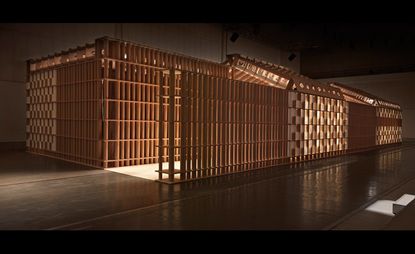
Hermès has appeared at the Salone del Mobile for the first time ever, signalling a definitive entrance back into the furniture market after a considerable hiatus away. Launching its brand new contemporary interiors collection in Milan's La Pelota in via Palermo, the luxury brand made a statement of serious intent by the headline commissioning of architects Shigeru Ban and his partner Jean de Gastines to create the specially conceived space.
Ban and de Gastines, who worked together on the Centre Pompidou-Metz, were a natural choice for Hermès' creative director Pierre-Alexis Dumas, and Pavillion Hermès, structured with cardboard tubes woven with paper, is essentially a nomadic structure with a modular core. The interior space has been constructed to be intimate, with ceiling height and area size varying from room to room.
Simple and minimally-embellished, the space - rather than being an overwhelming display of architectural might - works to reflect on the craft on show, such as eight pieces originally designed by Jean-Michel Frank in the 1920s which were reissued by the house in November last year.
Also making their debut was a furniture set for the office and dining room by Enzo Mari, and a line of living room furniture by Antonio Citterio. Denis Montel, artistic director of long-time Hermès collaborator and interior agency RDAI, has also co-designed the collection's signature chair with Eric Benqué, while also on show were furnishing fabrics and wallpapers brought out through Hermes' joint venture with Italian textile firm, Dedar.

Pavillion Hermès, structured with cardboard tubes woven with paper, is essentially a nomadic structure with a modular core. The interior space has been constructed to be intimate, with ceiling height and area size varying from room to room
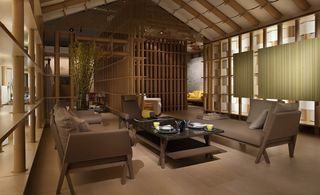
The space works to reflect on the craft on show such as a line of living room furniture by Antonio Citterio, seen here in the installation’s ’living room’ area
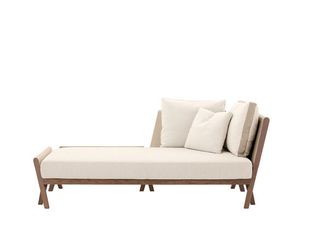
’Divano Face’ chair, by Antonio Citterio
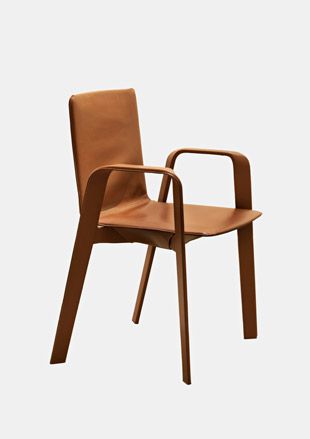
Denis Montel, artistic director of long-time Hermès collaborator and interior agency RDAI, has also co-designed this signature ’Chaise Sellier’ chair with Eric Benqué

Also making their debut was a furniture set for the office and dining room by Enzo Mari - seen here is the ’Table Ovale’
Wallpaper* Newsletter
Receive our daily digest of inspiration, escapism and design stories from around the world direct to your inbox
-
 Don’t Move, Improve 2024: London’s bold, bright and boutique home renovations
Don’t Move, Improve 2024: London’s bold, bright and boutique home renovationsDon’t Move, Improve 2024 reveals its shortlist, with 16 home designs competing for the top spot, to be announced in May
By Ellie Stathaki Published
-
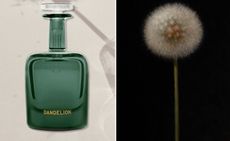 Perfumer H has bottled the scent of dandelions blowing in the wind
Perfumer H has bottled the scent of dandelions blowing in the windPerfumer H has debuted a new fragrance for spring, called Dandelion. Lyn Harris tells Wallpaper* about the process of its creation
By Hannah Tindle Published
-
 The best fashion moments at Milan Design Week 2024
The best fashion moments at Milan Design Week 2024Scarlett Conlon discovers the moments fashion met design at Salone del Mobile and Milan Design Week 2024, as Loewe, Hermès, Bottega Veneta, Prada and more staged intriguing presentations and launches across the city
By Scarlett Conlon Published
-
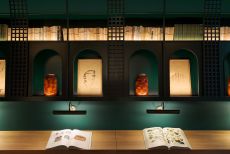 Romanengo is Milan’s new sweet spot
Romanengo is Milan’s new sweet spotRomanengo, the oldest Italian confectionery, opens its doors in Milan with interiors by Madrid-based architects Cousi Interiorismo
By Ifeoluwa Adedeji Published
-
 Vipp Palazzo pop-up hotel opens inside Brescia’s historical Palazzo Monti
Vipp Palazzo pop-up hotel opens inside Brescia’s historical Palazzo MontiScandi minimalism meets Baroque maximalism in Vipp Palazzo, a pop-up hotel by the Danish brand in the heart of Brescia
By Rosa Bertoli Published
-
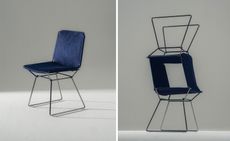 MDF Italia and Jacob Cohën rethink the ‘Neil’ seat in denim
MDF Italia and Jacob Cohën rethink the ‘Neil’ seat in denimMDF Italia has collaborated with Jacob Cohën on a new denim edition of the ‘Neil’ chair, making its debut at Salone del Mobile 2022
By Hannah Silver Last updated
-
 Knoll furniture by Antonio Citterio references historical designs
Knoll furniture by Antonio Citterio references historical designsDesigns of TH Robsjohn-Gibbings and Mies van der Rohe inspire the new collections of chairs and tables by Antonio Citterio for Knoll, presented at Salone del Mobile 2022
By Rosa Bertoli Last updated
-
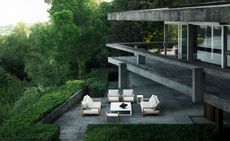 B&B Italia celebrates 15 years of outdoor furniture
B&B Italia celebrates 15 years of outdoor furnitureFrom a woven design by Patricia Urquiola to an aeroplane-inspired collection by Piero Lissoni: we look back on exceptional B&B Italia outdoor furniture
By Rosa Bertoli Last updated
-
 Hermès’ new dining set is sunshine on a plate
Hermès’ new dining set is sunshine on a plateBrighten your table with this new yellow and white porcelain Hermès tableware, ‘Soleil d’Hermès’
By Mary Cleary Last updated
-
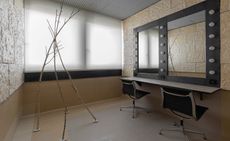 Dressing rooms with a difference at Milan’s Teatro degli Arcimboldi
Dressing rooms with a difference at Milan’s Teatro degli ArcimboldiHere’s your backstage pass to Teatro degli Arcimboldi. Wallpaper* talks to Milanese architect Giulia Pellegrino, who curated ‘Vietato L’Ingresso’, a project inviting 17 local practices to redesign dressing rooms in the legendary theatre
By Maria Cristina Didero Last updated
-
 India Mahdavi monograph reveals a life in full colour
India Mahdavi monograph reveals a life in full colourAn ode to the power of colour, India Mahdavi’s first monograph shines the spotlight on the designer’s trendsetting interiors and signature pieces
By Léa Teuscher Last updated